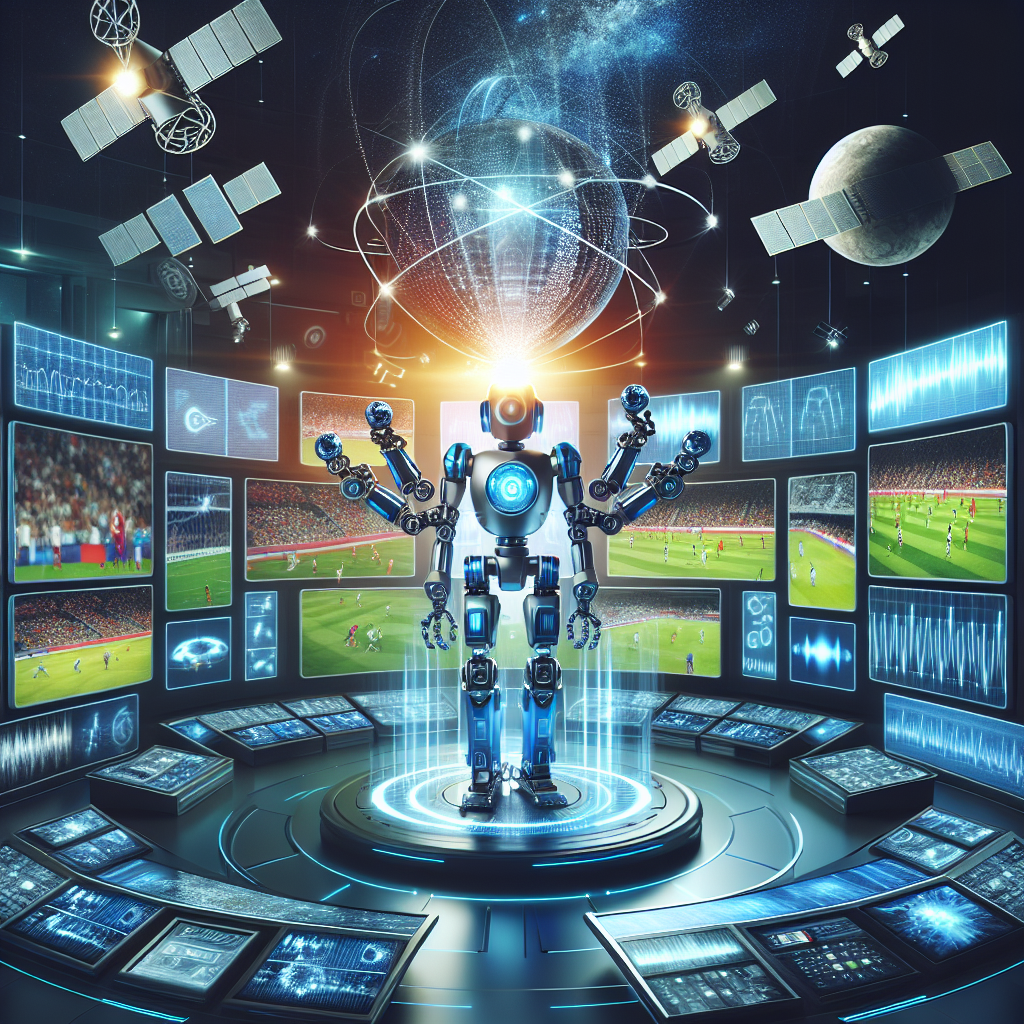The Future of Sports Broadcasting with AI
The world of sports broadcasting is constantly evolving, with new technologies and innovations shaping the way fans consume their favorite games. One of the most exciting developments in recent years has been the integration of artificial intelligence (AI) into sports broadcasting. AI has the potential to revolutionize the way we watch and interact with sports, from providing more personalized viewing experiences to enhancing the overall quality of broadcasts. In this article, we will explore the future of sports broadcasting with AI and discuss how this technology is reshaping the way we experience sports.
What is AI in sports broadcasting?
AI refers to the use of computer systems to perform tasks that typically require human intelligence, such as speech recognition, visual perception, and decision-making. In sports broadcasting, AI is being used to automate and enhance various aspects of the production process, from capturing and analyzing data to generating real-time statistics and insights. AI is also being used to improve the viewing experience for fans, with features such as personalized highlights, interactive graphics, and predictive analytics.
How is AI being used in sports broadcasting?
AI is being used in a variety of ways to enhance sports broadcasting. One of the most common applications of AI in sports broadcasting is automated camera systems that can track players and follow the action on the field or court. These systems use computer vision technology to analyze video feeds in real-time and adjust the cameras to capture the most compelling shots. AI is also being used to generate real-time statistics and insights, such as player performance metrics, game predictions, and highlight reels. Additionally, AI-powered graphics and overlays are being used to enhance the viewing experience, providing fans with interactive elements and immersive visuals.
What are the benefits of AI in sports broadcasting?
There are several benefits to using AI in sports broadcasting. One of the main advantages is the ability to provide more personalized viewing experiences for fans. AI can analyze viewer preferences and behavior to deliver tailored content, such as personalized highlights, replays, and commentary. This can help increase viewer engagement and retention, as well as drive revenue through targeted advertising and sponsorship opportunities. AI can also improve the overall quality of broadcasts by providing real-time statistics and insights that enhance the viewer experience. Additionally, AI can help sports broadcasters automate and streamline production processes, reducing costs and increasing efficiency.
What are the challenges of AI in sports broadcasting?
While AI has the potential to revolutionize sports broadcasting, there are also challenges that need to be addressed. One of the main challenges is the potential for bias in AI algorithms. AI systems are only as good as the data they are trained on, and if the data is biased or incomplete, it can lead to inaccurate results. This is especially concerning in sports broadcasting, where accuracy and fairness are crucial. Another challenge is the potential for job displacement, as AI systems automate tasks that were previously done by humans. While AI can improve efficiency and reduce costs, it can also lead to job losses in the industry. Additionally, there are concerns about data privacy and security, as AI systems collect and analyze vast amounts of personal data from viewers.
What is the future of sports broadcasting with AI?
The future of sports broadcasting with AI is bright, with endless possibilities for innovation and growth. AI has the potential to revolutionize the way we watch and interact with sports, providing more personalized and engaging experiences for fans. In the coming years, we can expect to see AI-powered camera systems that can capture every angle of the action, real-time statistics and insights that enhance the viewer experience, and interactive features that allow fans to engage with the game in new ways. AI will also play a key role in driving revenue for sports broadcasters, through targeted advertising, sponsorship opportunities, and premium content offerings.
In conclusion, the future of sports broadcasting with AI is full of exciting possibilities. As technology continues to evolve, we can expect to see AI playing an increasingly important role in how we experience sports. From personalized viewing experiences to enhanced production processes, AI is reshaping the way we watch and engage with our favorite games. While there are challenges to overcome, the potential benefits of AI in sports broadcasting are vast, and the industry is poised for significant growth in the coming years.
FAQs
Q: Will AI replace human broadcasters in the future?
A: While AI has the potential to automate certain tasks in sports broadcasting, such as generating statistics and highlights, human broadcasters will still play a crucial role in providing commentary, analysis, and storytelling. AI can enhance the overall production process, but human broadcasters bring a unique perspective and connection to the game that AI cannot replicate.
Q: How can fans benefit from AI in sports broadcasting?
A: Fans can benefit from AI in sports broadcasting in a variety of ways, such as personalized viewing experiences, real-time statistics and insights, and interactive features. AI can help fans stay engaged and informed while watching their favorite games, providing a more immersive and interactive viewing experience.
Q: What are some examples of AI in sports broadcasting today?
A: Some examples of AI in sports broadcasting today include automated camera systems that track players and follow the action, real-time statistics and insights generated by AI algorithms, and interactive graphics and overlays that enhance the viewer experience. AI is already being used to improve the quality and engagement of sports broadcasts, with many more innovations on the horizon.

